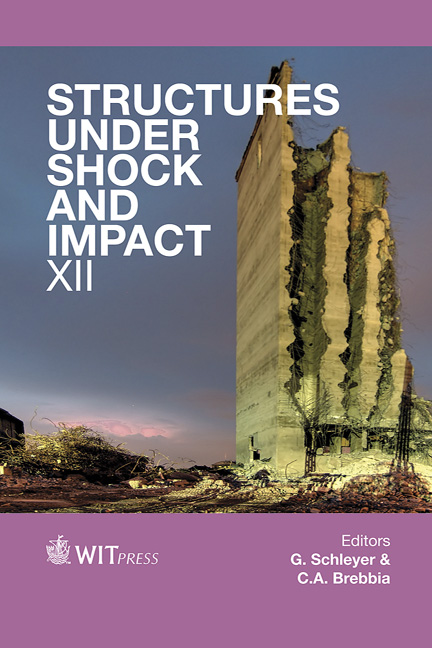Experimental Measure Of Impact In Temporary Handrails
Price
Free (open access)
Transaction
Volume
126
Pages
12
Page Range
121 - 132
Published
2012
Size
1,151 kb
Paper DOI
10.2495/SU120111
Copyright
WIT Press
Author(s)
J. C. Pomares, B. Ferrer, D. Más, C. Lozano, S. Bresó & R. Irles
Abstract
In recent years, previous work with numerical models of impact generated by a fall on edge protection systems (EPS), class C according to EN 13374, showed that current requirements for this system could be inadequate or dangerous for the integrity of injured people, leading to excessive impact factors. Special difficulties arise when the injured fall directly against the EPS supports. To confirm the results of numerical models, two series of experiments were developed using real size samples built with a steel frame and a safety net or other stop surfaces. The paper describes these experiments carried out according to EN 13374 and using a new design of supports with a curved slope to avoid direct impact against them. Data was recorded with a triaxial accelerometer and a high velocity camera. The first series, with a standard safety net, showed a very good behaviour, leading to acceptable impact factors and no direct impact against the frame. The second series was conducted on a reinforced frame and substituting the net by a thin steel bar grid, to reduce the deflection up to the minimum required in EN 13374. The results confirmed the numerical predictions and show that current requirements lead to excessive impact factors that can seriously injure the falling person, suggesting a revision of the European Norm. Keywords: handrails, fall, impact, impact factor, high velocity camera, EN13374, safety, net.
Keywords
handrails, fall, impact, impact factor, high velocity camera, EN13374, safety, net





